English Version
Hello dear community! This time I will continue to share with you images and stories of the emblematic places of Havana. City that I have been discovering under the lens of my mobile camera and that I have been sharing with you. In this post I will tell you about my tour of two emblematic places in the historic centre of the Cuban capital: the Cathedral Square and the Plaza de Armas. I hope you like it.
Cathedral Square
I will start by talking about the Cathedral Square. It is one of the most beautiful squares in Havana with a rich history that dates back to the beginning of the colonial era in Cuba, also known at the beginning as Plaza de la Cienaga because it was a low coastal area. It is located in the very heart of the historical centre, which today belongs to the municipality of Habana Vieja. Its name derives from the main architectural work located there: The Cathedral of Havana, a majestic baroque architectural work built between the 17th and 18th centuries. During that time this square has functioned as a social and religious centre where public and military events were held, as well as religious ceremonies. Throughout time it has preserved its historical-cultural and architectural charm, which has allowed it to qualify as a popular tourist destination.
Cathedral
It is the most famous and notable of the Cuban baroque style temples of the 18th century. It is characterised by its columns without pedestals that start from the floor and the jambs of the doors and windows. Between 1946 and 1949 the Cathedral underwent a restoration directed by the architect Cristóbal Martínez Márquez, which included some modifications to its interior. A curious fact is that in 1796, after Spain ceded the remaining part of Hispaniola to France, the remains of Admiral Christopher Columbus from Santo Domingo were deposited in the cathedral.

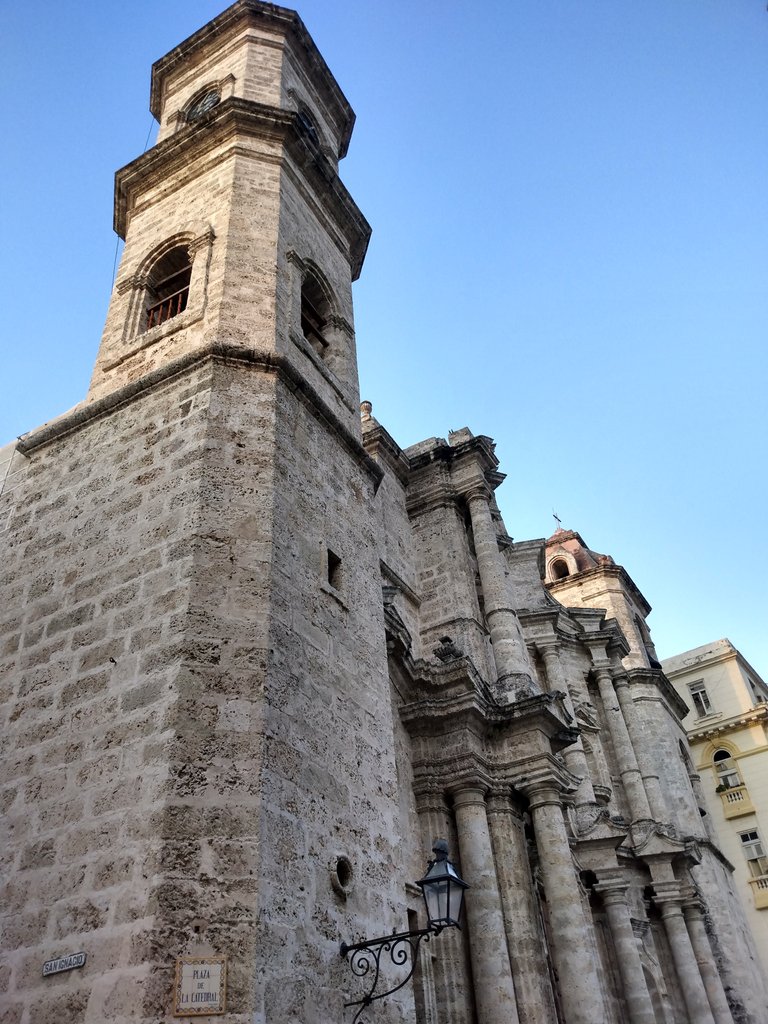
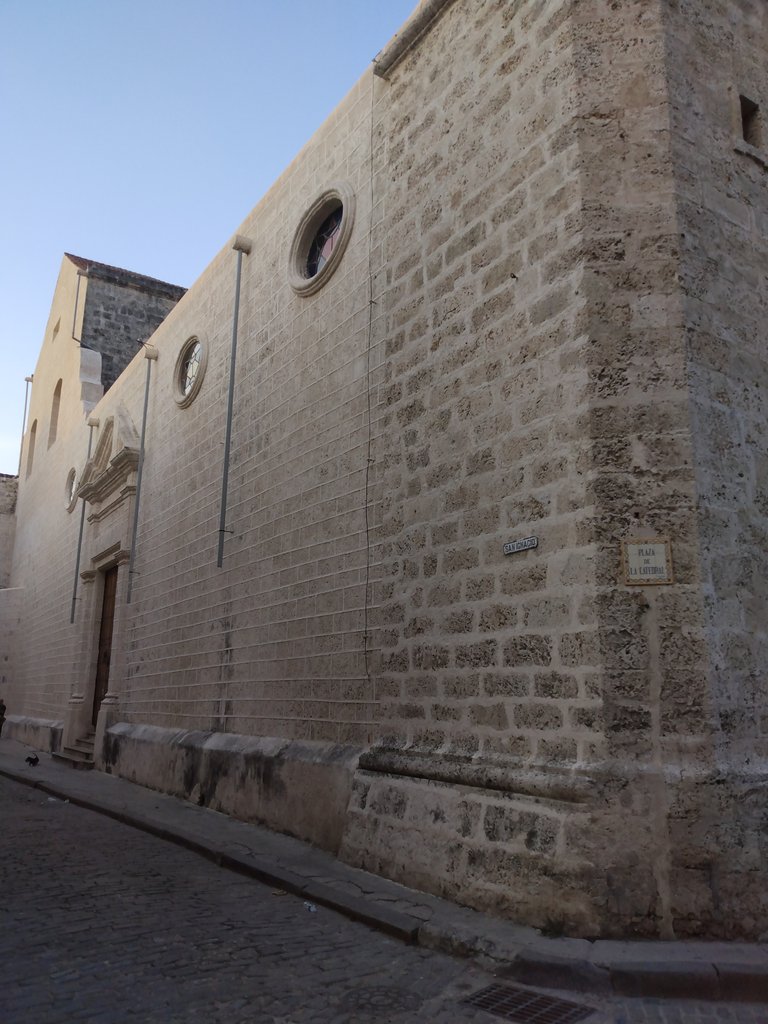
Together with the cathedral, the square is bordered by other important buildings such as: the House of the Conde de Casa Bayona (today Museo de Arte Colonial), House of the Marquis of Arcos and the Antigua Casa de Baños.
House of the Count of Casa Bayona (Museum of Colonial Art)
The construction of this house dates back to the 18th century, characterised by Cuban colonial architecture. It was built by Juan Sánchez Pereira in the 17th century and later belonged to Don José Bayona y Chacón. It housed the newspaper La Discusión and later served as an office for the firm Arechavala. Currently, this building is the Museum of Colonial Art, where collections of colonial art are kept.

House of the Marquis of Arcos
This is one of the jewels of Cuban baroque and is considered by experts in the field to be one of the most representative examples of residential architecture in Cuba in the 18th century. This building closes off the square to the south. The house passed through several owners until finally its last owner was Ignacio Peñalver y Cárdenas, Marquis of Arcos from whom it got its name until today.
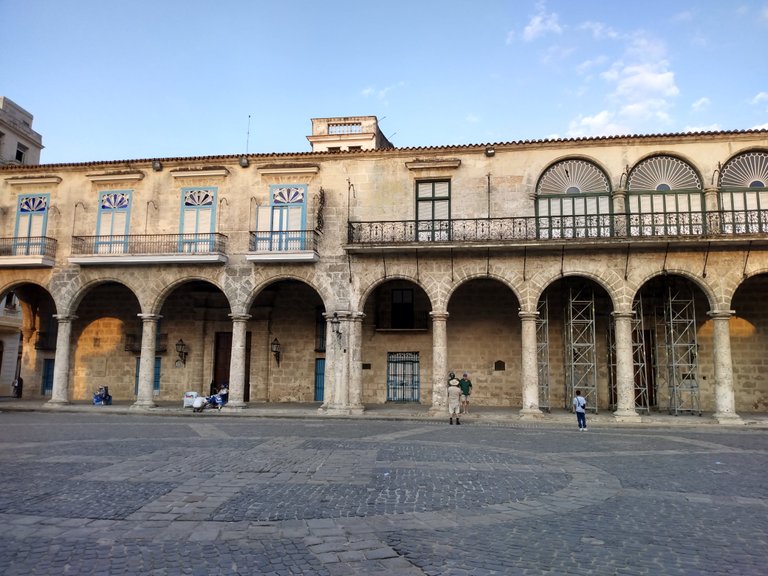
On one of the columns at the entrance of the building, the visitor's attention is drawn to a whimsical bronze sculpture in allusion to ´´Antonio Gades´´, the most universal of Spanish dancers. People often take pictures with this unique sculpture.

Old Bath House
This building is the most modern of those surrounding the Plaza de La Catedral. It was erected in 1587 where there was originally a cistern that supplied drinking water to the small town of San Cristóbal, the navies and the ships that docked in the port. In 1890, the well known ''Public Baths of the Cathedral'' were installed in this place.
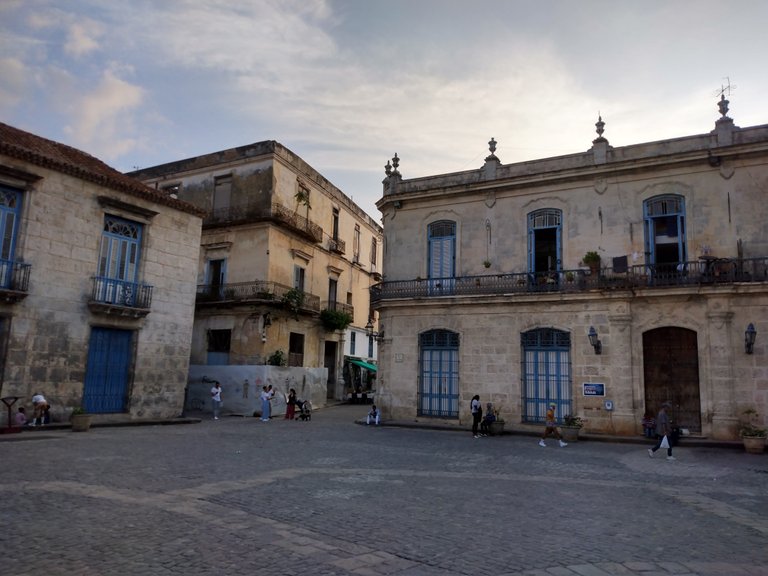
Plaza de Armas
The Plaza de Armas is one of the oldest squares in Havana and the first public space in the former Village of San Cristóbal. Its construction dates back to the 16th century. At the beginning, it was the political and military centre of the city, where official celebrations and significant public acts took place, as well as revolutionary movements and independence proclamations. In the second half of the 18th century it was reborn as a civic centre, as a result of the project of the Marquis de la Torre, who surrounded it with the majestic palaces of the Second Corporal and the Captains General. The square is about 140 metres long by 70 metres wide and was built with traditional materials of the time such as brick, stone, wood and metal. Today, it is one of the main tourist attractions in the capital, with a rich architectural and historical legacy.
Plaza de Armas
A place that inspires to take a rest under its leafy trees contemplating a beautiful combination of colourful flowers and fountains.

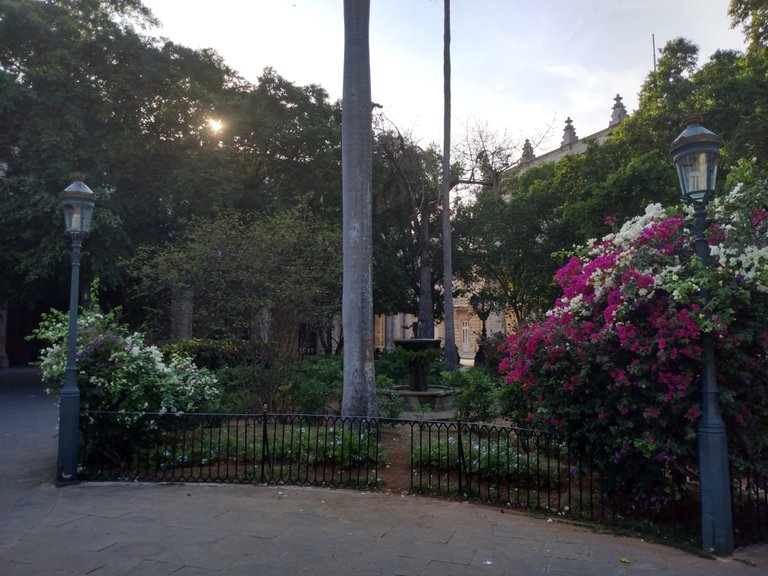

In the centre of the square there is a marble sculpture in honour of Carlos Manuel de Céspedes, better known as ''El Padre de la Patria'' (The Father of the Homeland) and who was the first president of the Republic.
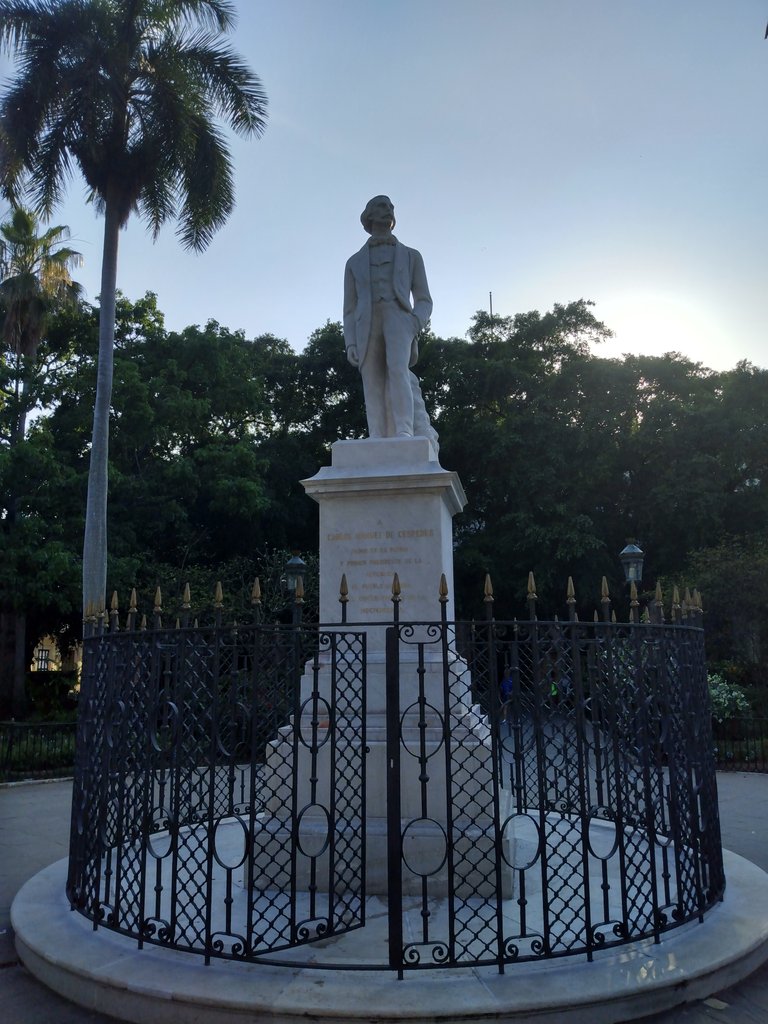
As was characteristic of the time, this square is bordered by important buildings such as: The Palace of the Captains General, the Palace of the Second Corporal as well as the Templete, the Palace of the Counts of Santovenia as well as more modern ones such as the Museum of Natural History.
Palace of the Captains General
It is considered to be the most important building in the history of the island as it was the government house and residence of the Spanish Captains General since 1971. Its construction began in 1776 and was in charge of the then governor and captain general Felipe Fonsdeviela, Marquis de la Torre. I must not fail to mention that two important events for Cuba took place here: the ceremony marking the end of Spanish domination and the beginning of American military rule, and the establishment of the republic and the inauguration of its first president, Tomás Estrada Palma. Today, the Office of the Historian of the City is located here.
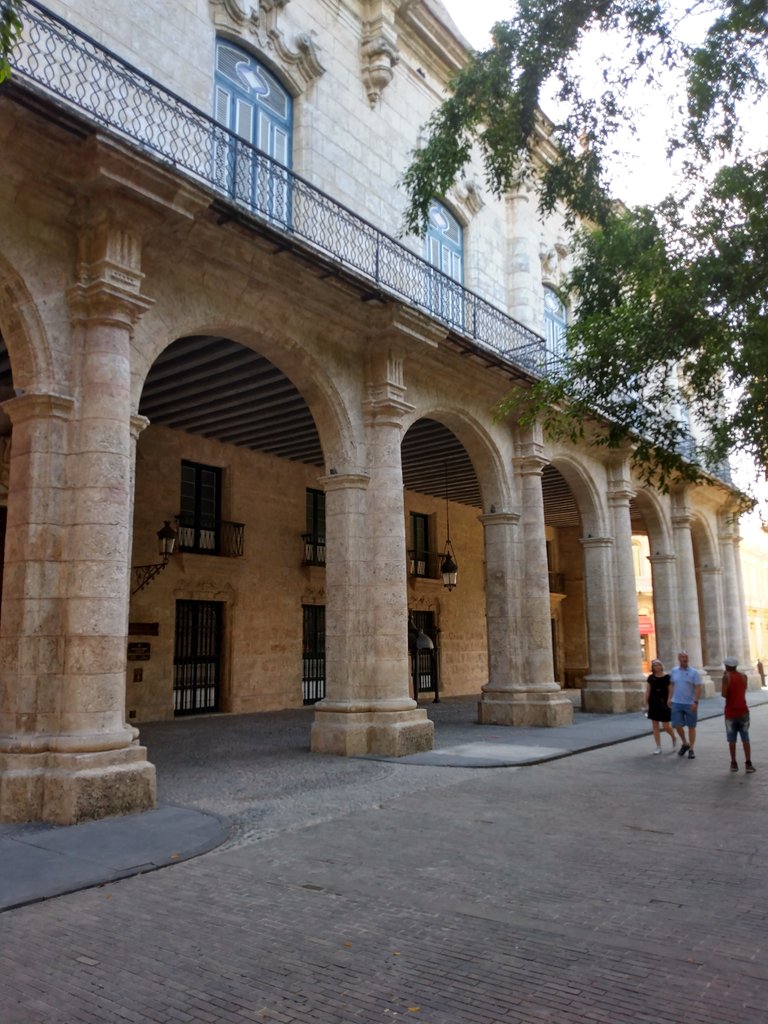
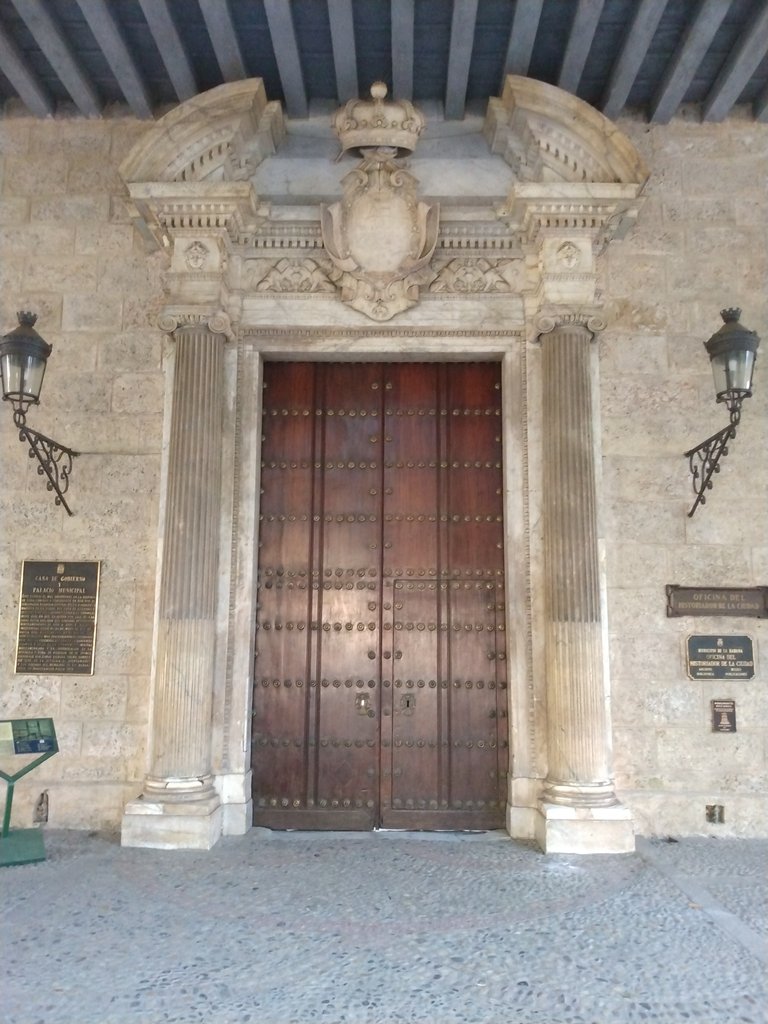
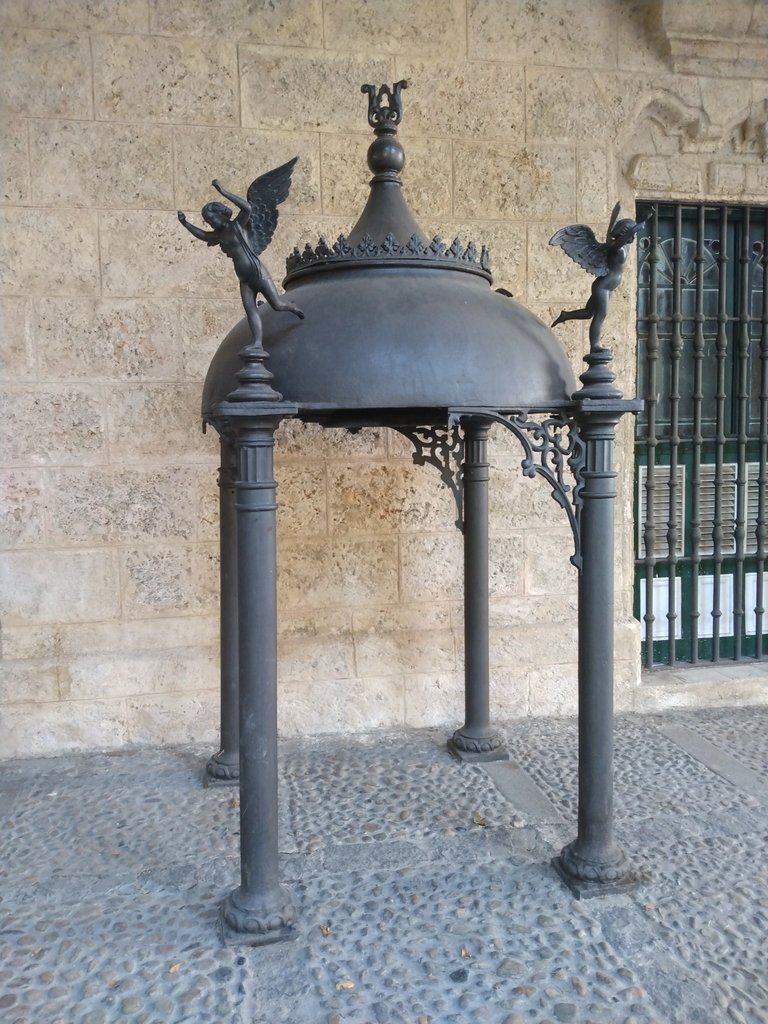
Almost at the main entrance we find a striking bronze sculpture in memory of Eusebio Leal Spéngler, one of the most illustrious Cubans of the last century and a fierce historian who always advocated for the preservation of Havana's historical heritage. Thanks to him, we can delight in observing a historic centre in a good state of preservation despite its age of more than 500 years.
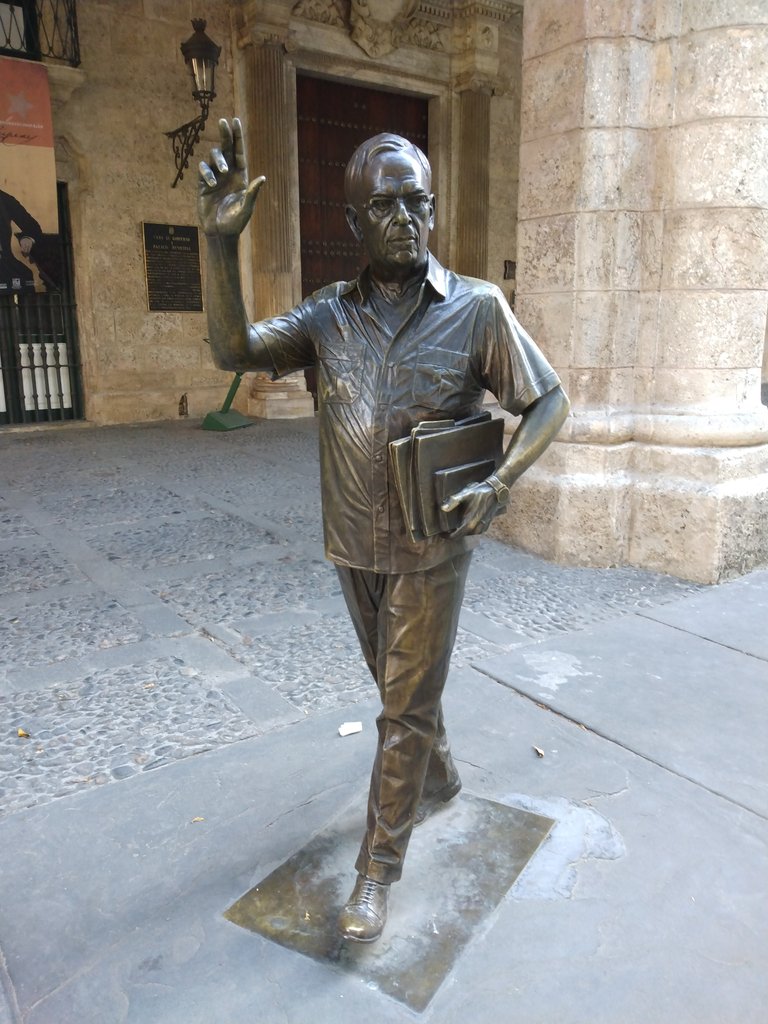
The Palace of the Second Corporal
This building was constructed in 1772 by the engineer Joseph Antonio de Armona and was originally designed to house the Post Office, the Quartermaster's Office, the Accountant's Office and the General Treasury of the Army.
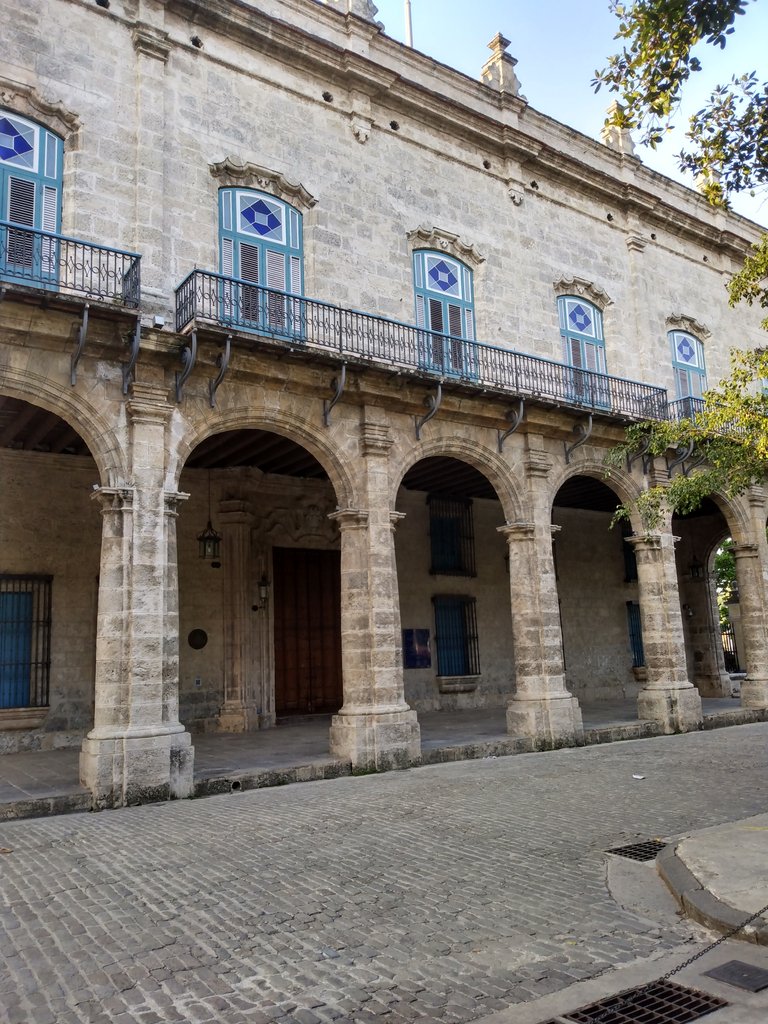
Palace of the Counts of Santovenia
It is a beautiful neoclassical residence, built at the end of the 18th century, where Julián F. Martínez de Campo, Count of Santovenia, lived. In 1832, he passed the property to his nephew José María Martínez de Campos, who, like his uncle, was titled Count of Santovenia.
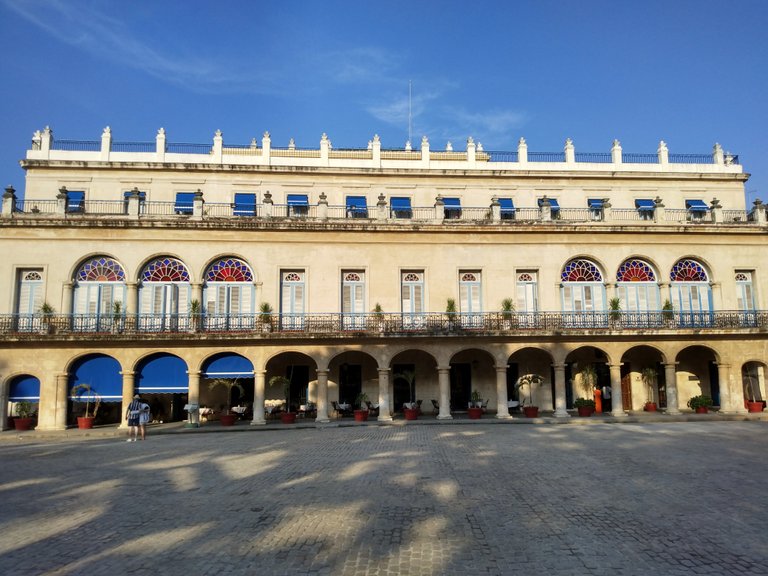
The Templete
This is a small temple built by Colonel Antonio María de la Torre. It is the first neoclassical building erected in the city, characterised by its elegant and simple façade with a pediment and decorated portico. It was inaugurated in 1828. In its front courtyard there is a ceiba tree surrounded by a fence around which visitors follow the tradition of turning it over at midnight and making a wish.


Museum of Natural History
Last but not least, we have the Natural History Museum; a building where we can observe a varied collection that includes specimens of flora and fauna, samples of rocks and minerals, exhibitions on ecology and evolution, etc.
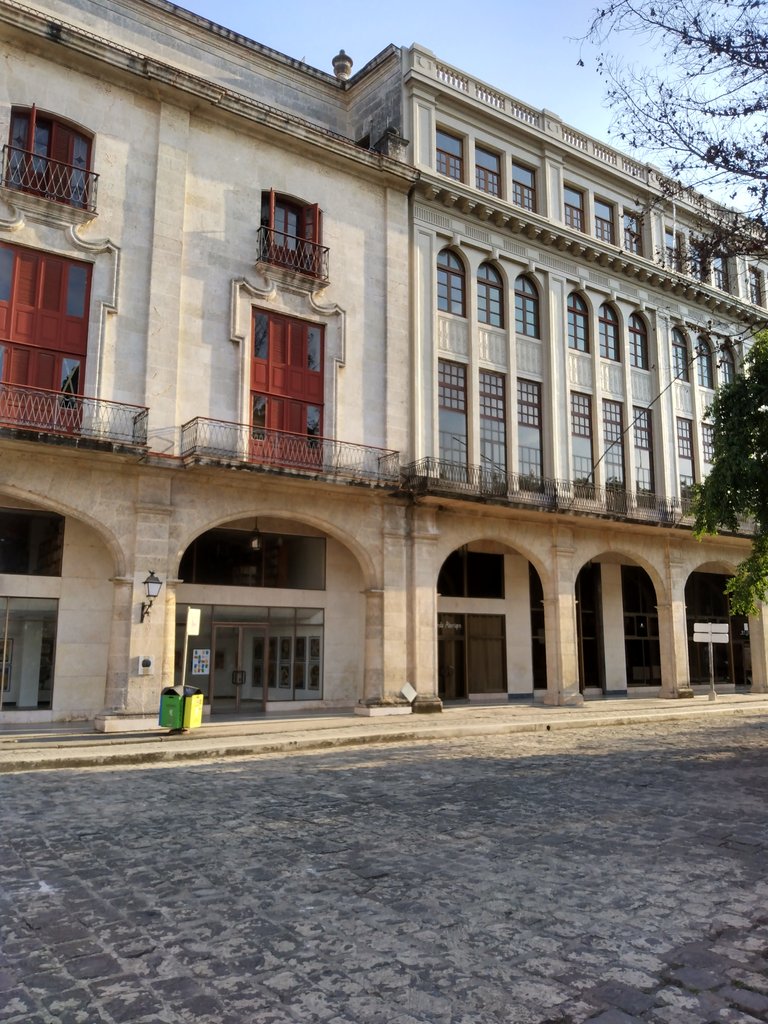
So much for our tour of the history of these two emblematic sites in Havana. I invite you to visit them when you are in the capital, I am sure you will enjoy them. See you on the next tour of Havana. Best regards!!
All images are my property, taken with my MOTO G PLAY (2021) cell phone.
Translated with DeepL.
Versión en Español
Hola querida comunidad!! En esta ocasión seguiré compartiéndoles imágenes e historias de los lugares emblemáticos de La Habana. Ciudad que he ido descubriendo bajo el lente de la cámara de mi móvil y que he estado compartiendo con ustedes. En este post les hablaré acerca de mi recorrido por dos sitios emblemáticos del casco histórico de la capital cubana: La Plaza de la Catedral y la Plaza de Armas. Espero les guste.
Plaza de la Catedral
Comenzare hablándoles de la Plaza de la Catedral. Constituye una de las plazas más hermosas de La Habana con una riqueza histórica que se remonta a los inicios de la época colonial en Cuba, también conocida en un inicio como Plaza de la Ciénaga debido a que era una zona litoral baja. Se encuentra en el mismísimo corazón del casco histórico hoy perteneciente al municipio Habana Vieja. Su nombre deriva de la principal obra arquitectónica allí ubicada: La Catedral de La Habana, majestuosa obra arquitectónica de estilo barroco construida entre los siglos XVII-XVIII. Durante esa época esta plaza ha funcionado como centro social y religioso donde, se efectuaron eventos públicos y militares; asi como ceremonias religiosas. A través del tiempo ha conservado su encanto histórico-cultural y arquitectónico, que han permitido calificarla como un destino turístico popular.
Catedral
Constituye el más famoso y notable de los templos de estilo barroco cubano en el siglo XVIII. Caracterizado por sus columnas carentes de pedestales que inician desde el piso y las jambas de las puertas y ventanas. Entre los años 1946 y 1949 la Catedral fue objeto de una restauración dirigida por el arquitecto Cristóbal Martínez Márquez, que incluyó algunas modificaciones en su interior. Un dato curioso es que, en 1796 luego que España cediera a Francia, la parte que le quedaba de La Española se depositaron en la catedral los restos del Almirante Cristóbal Colón procedentes de Santo Domingo.
Conjuntamente con la catedral la plaza se encuentra limitada por otras importantes edificaciones como: La Casa del Conde de Casa Bayona (hoy Museo de Arte Colonial), la Casa del Marqués de Arcos y la Antigua Casa de Baños.
Casa del Conde de Casa Bayona (Museo de Arte Colonial)
La construcción de esta casa data del siglo XVIII, caracterizada por una arquitectura colonial cubana fue construida por Juan Sánchez Pereira en el siglo XVII, la cual perteneció posteriormente a Don José Bayona y Chacón. En ella residió el periódico La Discusión y luego funcionó como oficina a la firma Arechavala. Actualmente, esta edificación es el Museo de Arte Colonial, donde se conservan colecciones de arte colonial.
Casa del Marqués de Arcos
Constituye una de las joyas del barroco cubano y considerada por entendidos en el tema como uno de los ejemplos más representativos de la arquitectura residencial en Cuba en el siglo XVIII. Esta construcción cierra por el sur la plaza. La casa pasó por varios propietarios hasta que finalmente su ultimo dueño fue Ignacio Peñalver y Cárdenas, Marqués de Arcos del cual obtuvo su nombre hasta la actualidad.
En uno de las columnas a la entrada de la edificación, llama la atención al visitante una caprichosa escultura en bronce en alusión a Antonio Gades, el más universal de los bailarines españoles. Las personas comúnmente se toman fotos con esta singular escultura.
Antigua Casa de Baños
Esta edificación constituye la más moderna de las que rodean la Plaza de La Catedral. Se erigió en 1587 donde inicialmente existía una cisterna que suministraba agua potable a la pequeña Villa de San Cristóbal, las armadas y las embarcaciones que atracaban en el puerto. En 1890, se instalan en este lugar los conocidos ´´Baños Públicos de la Catedral´´.
Plaza de Armas
La Plaza de Armas constituye una de las plazas más antiguas de La Habana y el primer espacio público de la otrora Villa de San Cristóbal. Su construcción data del siglo XVI. En un inicio, era el centro político y militar de la urbe citadina, donde se efectuaban celebraciones de carácter oficial y significativos actos públicos; asi como movimientos revolucionarios y proclamaciones independentistas. En la segunda mitad del siglo XVIII renació como centro cívico, como resultado del proyecto del Marqués de la Torre, que la rodeó con los majestuosos palacios del Segundo Cabo y de los Capitanes Generales. La plaza tiene unos 140 metros de longitud por 70 metros de ancho y fue construida con materiales tradicionales de la época como ladrillo, piedra, madera y metal. En la actualidad, es uno de los principales puntos turísticos de la capital que encierran un rico legado arquitectónico e histórico.
Plaza de Armas
Sitio que inspira a tomar un descanso bajo sus frondosos árboles contemplando una hermosa combinación de vistosas flores y fuentes.
En el centro de la plaza nos encontramos con una escultura en mármol en honor a Carlos Manuel de Céspedes más conocido como ´´El Padre de la Patria´´ y quién fuera el primer presidente de la república.
Como era característico de la época, esta plaza se encuentra limitada por importantes edificaciones como: El Palacio de los Capitanes Generales, el Palacio del Segundo Cabo, el Palacio de los Condes de Santovenia asi como el Templete, además de otras más modernas como el Museo de Historia Natural.
Palacio de los Capitanes Generales
Se considera como la edificación más importante en la historia de la isla ya que fue casa de gobierno y residencia de los capitanes generales españoles desde el año 1971. Su construcción se inició en 1776 y estuvo a cargo del entonces gobernador y capitán general Felipe Fonsdeviela, Marqués de la Torre. No debo dejar de mencionar que aquí se llevaron a cabos dos importantes acontecimientos para Cuba: la ceremonia del cese de la dominación española e inicio del dominio militar norteamericano y la instauración de la república y la toma de posesión de su primer presidente Tomás Estrada Palma. En la actualidad, aquí radica la Oficina del Historiador de la Ciudad.
Casi en la entrada principal nos encontramos con una llamativa escultura en bronce en memoria a Eusebio Leal Spéngler uno de los cubanos ilustres del siglo pasado y quien fuera un férreo historiador que abogó siempre por la conservación del patrimonio histórico de La Habana. Gracias a él, podemos deleitarnos en observar un casco histórico en buen estado de conservación a pesar de su antigüedad de más de 500 años.
El Palacio del Segundo Cabo
Este edificio fue construido en 1772 y su ejecución estuvo a cargo del ingeniero Joseph Antonio de Armona y en un principio fue proyectado para la Administración de Correos, la Intendencia, la Contaduría y Tesorería General del Ejército.
El palacio de los Condes de Santovenia
Constituye una hermosa residencia de estilo neoclásico, erigida a finales del siglo XVIII y en donde residió Julián F. Martínez de Campo, Conde de Santovenia el cual, en el año 1832 le pasa la propiedad a su sobrino José María Martínez de Campos quien a su vez fue titulado tal como su tío como Conde de Santovenia.
El Templete
Constituye un pequeño templo cuya construcción estuvo a cargo del Coronel Antonio María de la Torre. Este constituye la primera obra de estilo neoclásico erigida en la ciudad, caracterizada por su fachada elegante y simple con un frontón y pórtico decorado. Fue inaugurado en el año 1828. En su patio frontal se encuentra una ceiba cercada por una reja alrededor de la cual, los visitantes siguen la tradición de darle la vuelta a las 12 de la noche y pedir un deseo.
Museo de Historia Natural
Por último, tenemos no menos importante al Museo de Historia Natural; edificación donde podemos observar una variada colección que incluye especímenes de flora y fauna, muestras de rocas y minerales, exhibiciones sobre ecología y evolución, etc.
Hasta aquí nuestro recorrido por la historia de estos dos sitios emblemáticos de La Habana. Les invito a visitarlos cuando estén en la capital, estoy seguro que los disfrutarán. Nos vemos en el próximo tour por La Habana. Saludos cordiales!!
Todas las imágenes son de mi propiedad, tomadas con mi teléfono móvil MOTO G PLAY (2021).
Traducido con DeepL.





